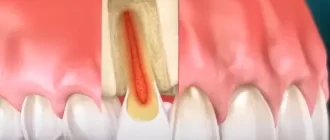Ever wondered why tooth decay, despite advances in dentistry, remains one of the most common health issues in the world?
Prevalence of Tooth Decay by Age Group
| Age Group | Percentage of Cases |
|---|---|
| Children (0-12 years) | 55% |
| Teenagers (13-19 years) | 70% |
| Adults (20-64 years) | 85% |
| Seniors (65+ years) | 60% |
This chart illustrates the prevalence of tooth decay among different age groups, highlighting the significant impact across all stages of life.
What Exactly Is Severe Tooth Decay?
Severe tooth decay occurs when cavities are left untreated and bacteria begin to damage not only the enamel but also deeper layers of the tooth. This process, if left unchecked, can cause significant pain and lead to infections or even tooth loss. According to the CDC, around 26% of adults in the U.S. have untreated tooth decay. So, if you think you’re alone, you’re certainly not—this is a common problem, and there are solutions.
Why Does Tooth Decay Happen?
You might be thinking, “I brush twice a day, so why did I still get cavities?” The answer lies in various factors: diet, genetics, saliva production, and even stress can affect your oral health. Diet plays a critical role, with sugary and acidic foods being the biggest culprits. Bacteria in your mouth convert sugar into acid, which gradually wears down your enamel. Without proper intervention, this cycle can lead to severe decay.
Did You Know?
Most people develop their first cavity in childhood. However, adults who experience dry mouth, often due to medication, are at an increased risk for tooth decay (National Institute of Dental and Craniofacial Research).
Signs You Need to Take Action—And Fast
Severe tooth decay isn’t subtle. Signs include persistent toothache, sensitivity to hot or cold, dark spots on your teeth, and bad breath that just won’t go away. Ignoring these signs is like ignoring the oil light in your car—the problem isn’t going to solve itself.
Table: Signs and Symptoms of Severe Tooth Decay
| Symptom | Description |
|---|---|
| Persistent Toothache | Constant pain in or around a tooth |
| Sensitivity to Temperature | Sharp pain when eating/drinking hot or cold items |
| Discoloration | Brown, black, or white spots on teeth |
| Bad Breath | Chronic odor, even with good hygiene |
Treatment Options: From Fillings to Root Canals
1. Fillings and Crowns
The first line of defense against severe tooth decay is often a filling or crown. Dentists remove the decayed part of the tooth and replace it with a filling material like composite resin or metal. Crowns are used when the decay is more extensive, requiring more support for the tooth.
Did You Know?
Metal crowns, though less popular nowadays, are often more durable than ceramic ones, particularly for molars (American Dental Association).
2. Root Canal Therapy
If decay reaches the pulp—the innermost part of the tooth containing nerves and blood vessels—you’ll need a root canal. This involves removing the infected tissue, cleaning the canal, and then sealing it to prevent further infection. Modern root canals have a high success rate of about 95%, and they’re much less painful than their reputation suggests.
3. Tooth Extraction
Sometimes, the damage is too severe, and the only option is to remove the tooth. Extraction might sound extreme, but it’s necessary when the infection threatens other teeth or even your general health. Fortunately, dental implants or bridges can replace the missing tooth, helping maintain your smile and bite functionality.
Success Rates of Different Treatments for Severe Tooth Decay
| Treatment Type | Success Rate |
|---|---|
| Fillings | 90% |
| Crowns | 85% |
| Root Canal Therapy | 95% |
| Tooth Extraction | 75% |
This chart provides an overview of the success rates for different treatments for severe tooth decay, helping to understand which options are most effective.
Is There a Way to Avoid Tooth Decay Altogether?
Prevention is always better than treatment. Regular dental check-ups, fluoride treatments, and maintaining a healthy diet low in sugar are key strategies to prevent decay. Interestingly, chewing sugar-free gum can also help, as it stimulates saliva production, which naturally fights harmful bacteria.
Did You Know?
Cheese is one of the best foods for your teeth! It not only contains calcium but also raises the pH level in your mouth, reducing the risk of cavities (Journal of the American Dental Association).
Trends in Tooth Decay Treatments
Newer technologies are changing the way we approach severe tooth decay. Laser dentistry, for instance, allows for less invasive treatment, often without the need for anesthesia. Moreover, silver diamine fluoride (SDF) is emerging as a useful tool to halt decay in its tracks—particularly helpful for patients who cannot undergo more complex procedures immediately.
Costs and Considerations
The cost of treating severe tooth decay can vary widely, ranging from $150 for a basic filling to $3,000 or more for root canals and crowns. While this can be a significant financial burden, treating tooth decay early can save you both money and pain in the long run. Keep in mind that untreated decay can lead to more severe health issues, including systemic infections.
Average Cost of Treatments in the US vs. Other Countries
| Treatment Type | United States | Canada | United Kingdom | Germany |
|---|---|---|---|---|
| Filling | $200 | $150 | $120 | $160 |
| Crown | $1,200 | $900 | $800 | $1,000 |
| Root Canal | $1,000 | $700 | $650 | $800 |
This chart provides a comparison of the average costs of dental treatments in the United States and other countries, highlighting differences in healthcare expenses.
Editor’s Advice
If you find yourself dealing with severe tooth decay, don’t put off visiting a dentist. Early intervention can mean the difference between saving a tooth and losing it. A healthy diet, diligent oral hygiene, and regular dental visits are your best defenses against decay. Remember—when in doubt, get it checked out!
Frequency of Dental Visits vs. Severity of Tooth Decay
| Frequency of Visits | Severity of Tooth Decay |
|---|---|
| Twice a Year | Low |
| Once a Year | Moderate |
| Once Every Two Years | High |
| Rarely or Never | Severe |
This chart shows the relationship between the frequency of dental visits and the severity of tooth decay, highlighting the importance of regular check-ups.






